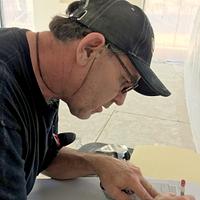re: Brave or Stupid?
RESULTS: FAIL
The joint didn’t hold, so the ney camp wins.
I was really surprised though, I thought it would hold.
There are some differences though compared to what the finished table would have been. First I’ll list the things that went against the test.
The table legs were 8’ long total, (48" each half) This may have been longer that the original base would have been therefore having more leverage, putting more pressure on the joint.
It was only half the leg, I think it would have been stronger if the other half were glued and connected to it.
It was bolted through 3/4 plywood and when the joint failed it actually pulled up and fractured the plywood. Not sure if the solid bottom legs would have helped or not.
The endgrain didn’t hold much glue, I should have drenched it but don’t know if it would have helped any more or not. I did smear both sides, waited a couple of minutes then added another layer and put it together.
Again I was surprised of the pressure exerted on the joint.
I think the last negative was that I put a 100 lb bag of sand out on the edge. I think that figures to a 400lb top. I probably should have started with 50lbs and went from there.
Here are some pics, not very scientific, but you can take whatever you can from it.
Here are the lags I used, pre-drilled into the legs.
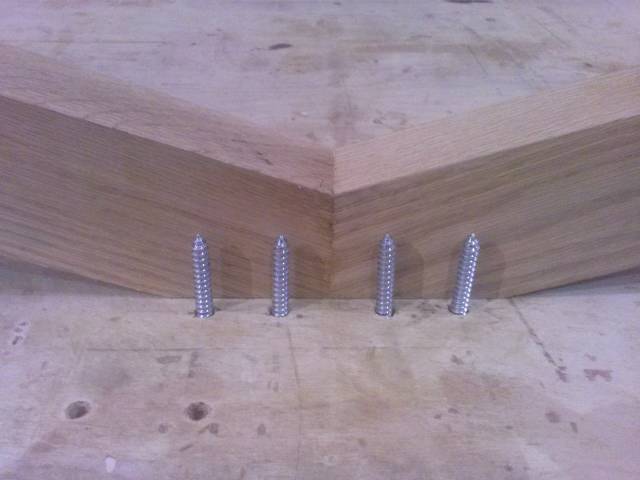
Here is the overall span of the base legs, I added a bar clamp at the opposite end to counter the pressure
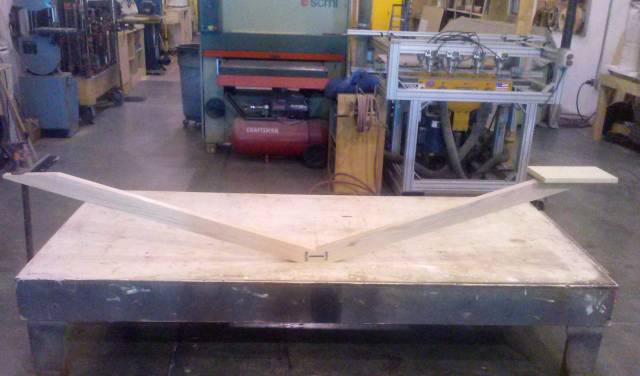
Here is the failed joint. The oak just cracked and split, and you can see the glue didn’t have much bite on the endgrain at all.
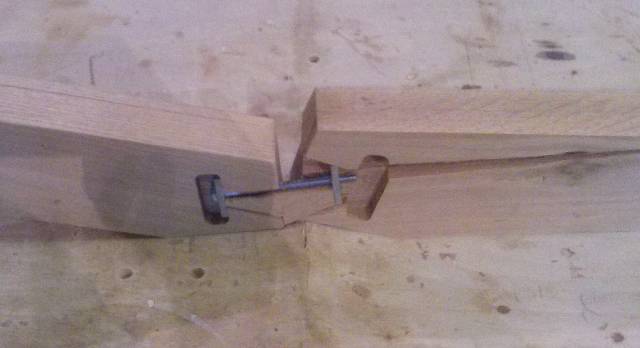
In conclusion, I think the table could still be doable. I think Bill’s saddle joint idea or even cutting some half laps would be the way to go.
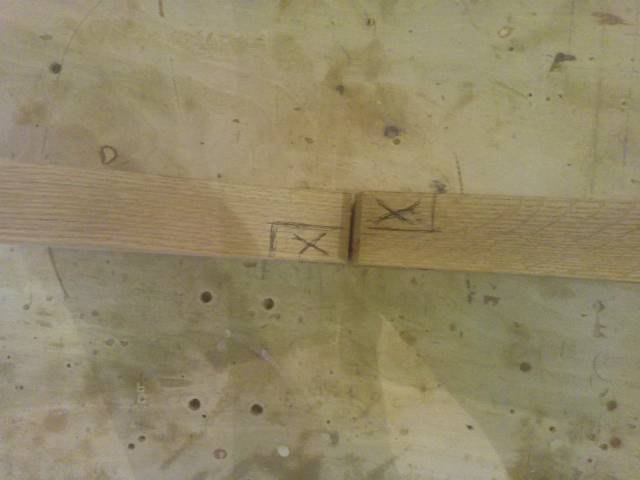
And now I bow out with my head hung low, but I had fun anyhow. On to the next!
Figuring out how to do something you have never done is what makes a good challenge.









